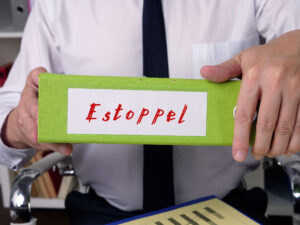Under employment law, discrimination, and workplace harassment are vast topics. They can explain various improper or unlawful behaviors that can lead to an employee feeling unsafe or uncomfortable.
Intersectional harassment is one kind of sexual harassment at work. However, the complexity of identity offers an exemplary solution when addressing the underlying reasons for sexual harassment in the workplace.
What does Intersectionality Mean?
Intersectionality is a conceptual framework for examining discrimination that was first developed by academic Kimberlé Crenshaw. People’s social and political identities significantly influence their interactions with others and the external world. There are numerous components of intersectionality, some of which are as follows:
- Age
- Gender
- Race
- Sex
- Class
- Religion
- Physical appearance
- Disability
- Sexual orientation
- National identity
- Immigration status
Examining how an individual’s intersecting identities shape their experiences helps others comprehend how different power structures affect marginalized groups. Furthermore, intersectionality aids in a better understanding of the nuanced effects of discrimination for both employers and employees.
Intersectional harassment: what is it?
Harassment or discrimination against an individual based on several facets of their identity, such as race, gender, sexual orientation, or social class, is known as intersectional harassment. The term “intersectional” refers to the concept that acknowledges the intricate web of interconnected aspects of individuals’ identities, which can pose unique challenges when they overlap. Discrimination or bullying occurs when someone experiences discrimination or bullying due to their simultaneous belonging to multiple minority or marginalized groups.
Intersectional harassment illustrations
Harassment of a black woman may occur for reasons other than her gender or ethnicity. Racial and gender stereotypes can lead to discriminatory and sexist remarks at work, as well as unjust advancements.
A gay Asian guy may be the victim of racist and homophobic remarks in addition to other forms of abuse. He might, for instance, hear offensive jokes or disparaging comments about his sexual orientation and race.
Because of their gender identity and physical constraints, transgender people with disabilities may experience harassment and discrimination. Due to their overlapping identities, they may be refused reasonable accommodations at work or excluded from social gatherings.
A low-income Latinx single mother may experience harassment or prejudice because of her gender, race, and socioeconomic background. She may face potential bias from landlords who may view her as a “welfare queen” and hinder her chances at housing.
The instances demonstrate how diverse identities can lead to different forms of harassment, underscoring the need to tackle these issues in the fight against discrimination and promote inclusivity.
Ways to lessen workplace sexual harassment
The EEOC offers specific suggestions based on their investigation into workplace harassment, despite the various actions companies can take to reduce its effects.
Headship:
A diverse, inclusive, and courteous workplace where harassment is not tolerated is essential, according to the Equal Employment Opportunity Commission (EEOC). Furthermore, “this leadership needs to originate from the highest levels of the company.”
Board-level executives should continuously seek ways to enhance the company’s cultural health by regularly reviewing cultural issues and ongoing anti-harassment initiatives. In addition, the board and the entire leadership team should openly support and take part in any initiatives (like training) that aim to convey to all employees that fostering a friendly and inclusive workplace is everyone’s duty.
Policy:
Your company should not simply state its commitment to addressing harassment, but rather hold employees accountable for their actions. Your company requires well-defined conduct policies that spell out expectations for proper employee conduct and that also specify severe, immediate penalties for infractions. In addition, your company must give employees simple-to-use, ideally anonymous, reporting procedures for infractions.
The Equal Employment Opportunity Commission (EEOC) suggests that all employees undergo regular, ideally interactive, anti-harassment training. It is also important to regularly reevaluate this training to monitor its overall efficacy and cultural impact.
Bystander intervention training would ideally enable employees to lessen the impact of harassing behavior and stop problems from getting worse to the point where management action is necessary. The EEOC also urges businesses to consider this in the report.
FAQs:
What effects does intersectionality have on society?
Intersectionality theory’s central claim is that social differentiation is accomplished through intricate relationships between markers of difference like gender, race, and socioeconomic class—a claim first made by feminists of color.
In terms of criminal justice, what does intersectionality mean?
The term “intersectionality” was first used to describe how social identities like race and class affect violence against Black women. It was first used in Crenshaw’s 1989 paper “Demarginalizing the Intersection of Race and Sex: A Black Feminist Critique of Antidiscrimination Doctrine, Feminist Theory and Antiracist Politics.”
What distinguishes diversity from intersectionality?
Here at DCA, we define intersectionality as how various facets of an individual’s identity can expose them to intersecting forms of marginalization and discrimination; diversity as the variety of people in your organization; and inclusion as the process of establishing an environment at work that allows that variety to function for both employers and workers.



